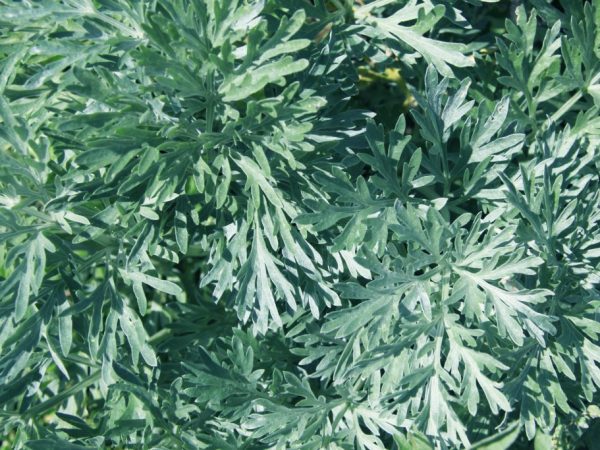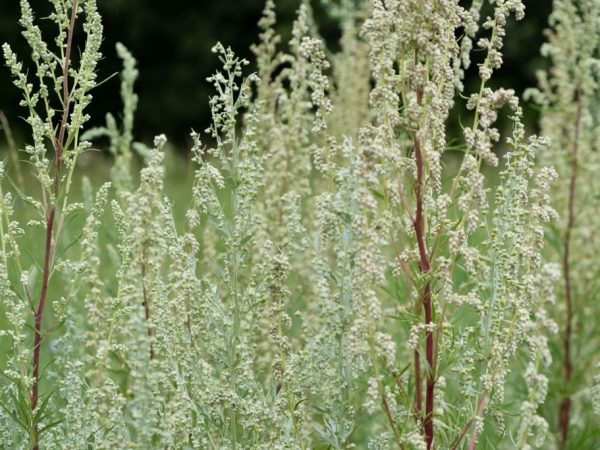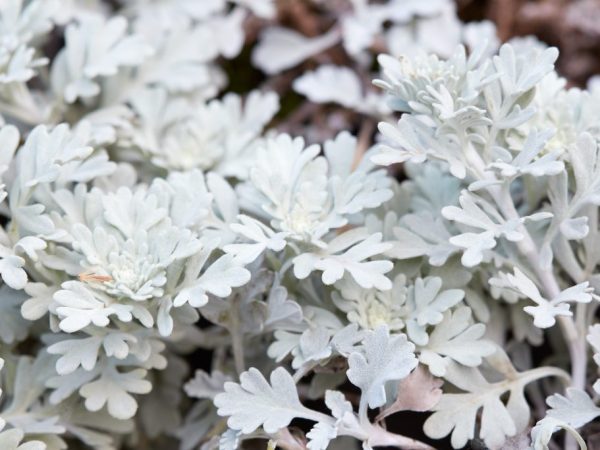Types of wormwood
Wormwood is a medicinal plant that has long been used in folk medicine. In nature, there are different types of wormwood, which differ among themselves not only in appearance, but also in the habitat, features of application.

Types of wormwood
General characteristics
This plant of the Aster family grows in temperate climates on the African, European and American continents. On the territory of Russia, it is found in the southern regions, as well as in the central and middle zones.
In nature, there are different types of wormwood: some are perennial crops, others are biennial, and still others are annual. Wild species are in the form of a shrub or semi-shrub.
Each variety of wormwood differs in the shape and color of the foliage, growth and place of growth. There are species with steel, silver-blue, silver-white or grayish-green foliage. Height varies from 20 cm to 1 m.
The description of the plant includes unpretentious care and resistance to cold. This culture is able to grow for a long time without moisture in dry and poor soil.
Tall plants
For those gardeners who want to decorate their garden area, tall types of wormwood are suitable.
Louisiana
The Louisiana variety is a large-sized shrub that reaches a meter in height, is distinguished by whitish foliage and light yellow small flowers.
The homeland of growth is North America. In horticulture, it is used as an ornamental crop. The bloom is abundant and bright, in mid-August.
Louisiana wormwood is a perennial that has medicinal properties. For the preparation of medicinal alcoholic tinctures, decoctions and extracts for ingestion and external use, the aerial part of the plant is used. For compresses and lotions, fresh grass, leaf juice and a dry plant, ground into powder, are used.
The aerial part of Louisiana wormwood is used to repel fleas and moths.
Annual
This annual species grows in Europe and Asia, in sandy areas, near railways, in the steppe. Its second name is sandy.
This plant is a weed that grows rapidly, filling large areas. Plant height varies from 30 to 100 cm. Leaves are bright green, flowers are yellow. Sandy wormwood blooms in July or August, depending on the region of growth.
The plant contains a large amount of essential oils with a pleasant aroma, ascorbic acid, alkaloids and tannins.
The sand wormwood variety has found its application in other spheres of life: soap making, perfumery and folk medicine (from malaria and dysentery). In cooking, this type is used as an aromatic seasoning.
This variety of wormwood is used as a garden ornamental plant, which not only decorates the garden, but also repels many parasites.
Pursha
A tall variety with a height of 70 to 90 cm. Erect stem with a large number of small shoots. Leaves are green, with a bluish bloom, whole. The flowers are miniature, light yellow, collected in panicle inflorescences.
The Pursha variety prefers to grow on lean, dry land in a sunny place.
Medium-sized plants

Plants have beneficial properties
This group includes garden and wild types of wormwood, which are not only decorative, but also have useful properties.
Field
Refers to perennial species, plant height - about 70 cm. The stems of the field wormwood are brown, the leaves are green, the flowers are reddish. In the wild, wormwood is found in Western Siberia and Central Asia. It grows mainly in the steppe, on flat areas, along roads.
Field wormwood has leaves and stems that are rich in essential oils and contain rubber. Fresh leaves of field grass are used in the treatment of many ailments: diseases of the stomach, genitourinary system, epilepsy. On the basis of the crushed foliage of the plant and pork lard, a unique wound-healing ointment is made.
Marine
Seaside wormwood (sea) is a popular perennial with green, densely pubescent foliage. It differs from other varieties with a strong aroma. The popular names of the variety are wormwood, white wormwood, white brooms.
Botanical description of the culture:
- height - from 40 to 60 cm;
- has a tree-like root system;
- the dwarf shrub consists of numerous stems forming a dense crown;
- leaves are green, with cuts along the edges;
- flowers are small, snow-white, collected in panicle inflorescences;
- blooms from July to August.
It grows in the steppe zone of Russia on the slopes, is often found in the desert, therefore it is also called steppe wormwood. Prefers saline soil and tolerates drought well. For this, among the people, it received a different name - saline wormwood.
Tincture based on leaves and stems of seaside wormwood is widely used in medicine. Lotions from the infusion help with bruises, poultices - with diarrhea in children. Fresh raw materials thin out the specific scent that repels fleas in the living area.
Barguzinskaya
The gray-growing perennial reaches 50 cm in height, has a tree-like, thickened root. The leaves are emerald in color, slightly covered with fluff. Flowers are small, collected in bunches of inflorescences of several pieces. The flowering period is mid-August.
Barguzin wormwood grows in the steppe, on the mountain slopes. Distributed in the European part of Russia.
Armenian
A medium-sized perennial dwarf shrub reaches a height of 50-70 cm. The foliage is large, pinnately dissected, green in color, covered with fluff. The flowers are pale yellow, collected in panicles.
The Armenian variety is distributed throughout the forest-steppe zone of the Caucasus and Asia Minor. It is a rare species listed in the Red Book.
Marshall

Marshall's wormwood grows in the steppe area
A semi-shrub variety without aroma, reaches a height of 50-70 cm. The foliage and stems of the plant are covered with fine hair. Shoots are red or brown, erect. The leaves are green, have a dissection along the edges.
The Marshall variety blooms with small flowers that form baskets. It grows in flat areas - in the steppe, meadows, forest glades. Distributed in Siberia and America.
Venichnaya
Wormwood paniculata or broom (in Latin - Artemisia scoparia) is a biennial with a height of 40-60 cm. Shoots of red-violet or brown edemas. Leaves are pinnately dissected, green. The flowers are tubular, form panicle inflorescences. Flowering begins in July and ends in mid-August.
Due to its strong aroma and useful composition, the use of the paniculate variety has become popular in folk medicine, cooking and winemaking.
Stunted plants
This group is made up of miniature varieties that are used to decorate the garden. They are planted both individually and in a group. There are several varieties that differ in description.
Wormwood Schmidt
A miniature perennial with a bitter-spicy aroma, silvery and deeply dissected leaves. It blooms with small yellow flowers. It is often planted near low-growing varieties of roses, on hills of stones and along curbs.
Steller's wormwood
A unique plant that differs from other varieties with openwork gray and delicate foliage. Steller's wormwood is an excellent decoration for gardens, terraces, balconies and walls of outbuildings. It goes well with bright colors.
Height - 30 cm. Grows in Japan, Norway and the Far East.
Shiny
In this variety of wormwood, the leaves have a strong odor, which distinguishes it from other species. The leaves are thin, flat, green in color, covered with a silvery bloom. Flowers are yellow-green and small.
Serves to decorate flower beds and steppe areas of the garden. In nature, it grows in the southeastern part of the Alps.
The peculiarity of brilliant wormwood is the ability to maintain its decorative effect even in the winter season.
Cold
A low-growing shrub about 40 cm high is distinguished by a pale shade of leaves. Cold wormwood blooms with pale yellow or purple-pink flowers. Found in Central Asia and China. Grows in the steppe, near pines, stones.

Wormwood is used medicinally
Due to the rich content of nutrients, it has found wide application in medicine. Healing decoctions and infusions are made from it, which help to reduce heat, eliminate fever and fever.
The leaves, flowers, stems and roots of cold wormwood contain essential oils, ascorbic acid and flavonoids.
Reception of the remedy is useful for any diseases of the pulmonary system.
Pontic
The variety Pontic, or Roman, reaches 40 cm in height, is distinguished by an intensive growth of the root system. Leaves are silvery green, feathery.
In nature, Pontic wormwood is found on rocky slopes, in the steppe zone, rarely in pine forests.
Silky
The rarest plant silky wormwood was listed in the Red Book. It is a miniature perennial with a height of 20-40 cm. It has a vertical tree-like rhizome. The stems are brown.
The leaves of the silky variety are glaucous, pinnately dissected. Flowers are small, collected in baskets. The flowering period is early or mid-August.
The variety of silky wormwood grows mainly in the European part of Russia, Western and Eastern Siberia, as well as in Asia. It is found in glades, in forbs, in the steppe zone, mixed and coniferous forests.
Crimean
Tauric wormwood, or Crimean, is a unique perennial up to 40 cm high with oblong gray and dissected leaves and small flowers collected in hemispherical inflorescences. It blooms profusely, the flowering period is in August.
Found in the Crimea, the Caucasus, in the Caspian steppes. On the territory of Russia, it grows in the Volgograd and Rostov regions.
Solyanka
A dwarf semi-shrub plant with a height of 15 to 30 cm is the rarest species listed in the Red Book.
Perennial has strong, tree-like and highly branching shoots of red or pink flowers. The leaves are glaucous, smooth, pinnately dissected. The flowers are small, collected in racemose inflorescences.
Solyankovidnaya wormwood prefers to grow on chalky or calcareous soil. Found in the Belgorod, Saratov, Rostov and Voronezh regions.
Austrian
A semi-shrub with erect stems from 20 to 40 cm high. Leaves are green, covered with white fluff. The flowers are small, yellow or red, collected in panicles. Grows in the steppe, meadows, forest edges.
The Austrian variety is of great value and is used in folk healing recipes and in the manufacture of perfumes. When rubbed, foliage and stems exude a pleasant and rich aroma.
White-felt
A rare dwarf variety, reaching 15-30 cm in height, it is found mainly on the territory of Ukraine. The white-tomentose variety has strong, whitish shoots. Leaves are oval, dissected, green and gray-green shades.
Inflorescences in the form of a pyramidal panicle are composed of small yellow flowers. It grows on calcareous and chalky soils, on rocky and mountain slopes.
Conclusion
This plant has many varieties, they are all different. Each species is valuable because possesses not only decorative qualities, but also medicinal, aromatic properties.

